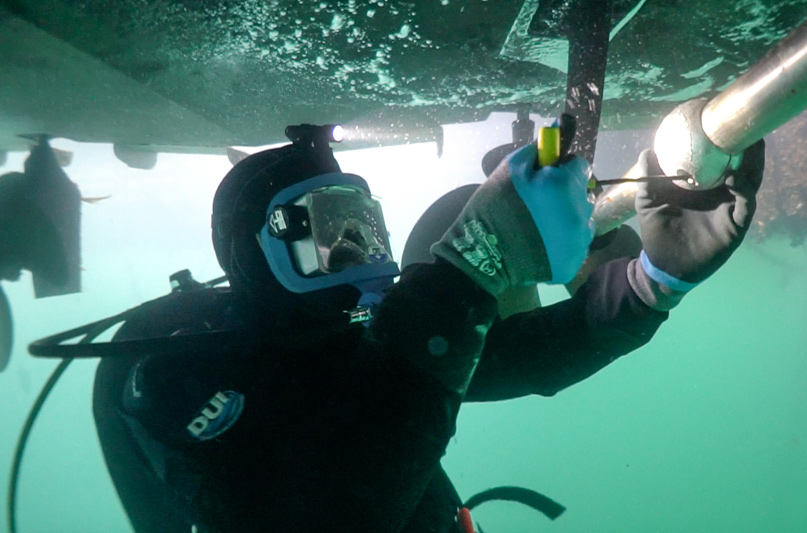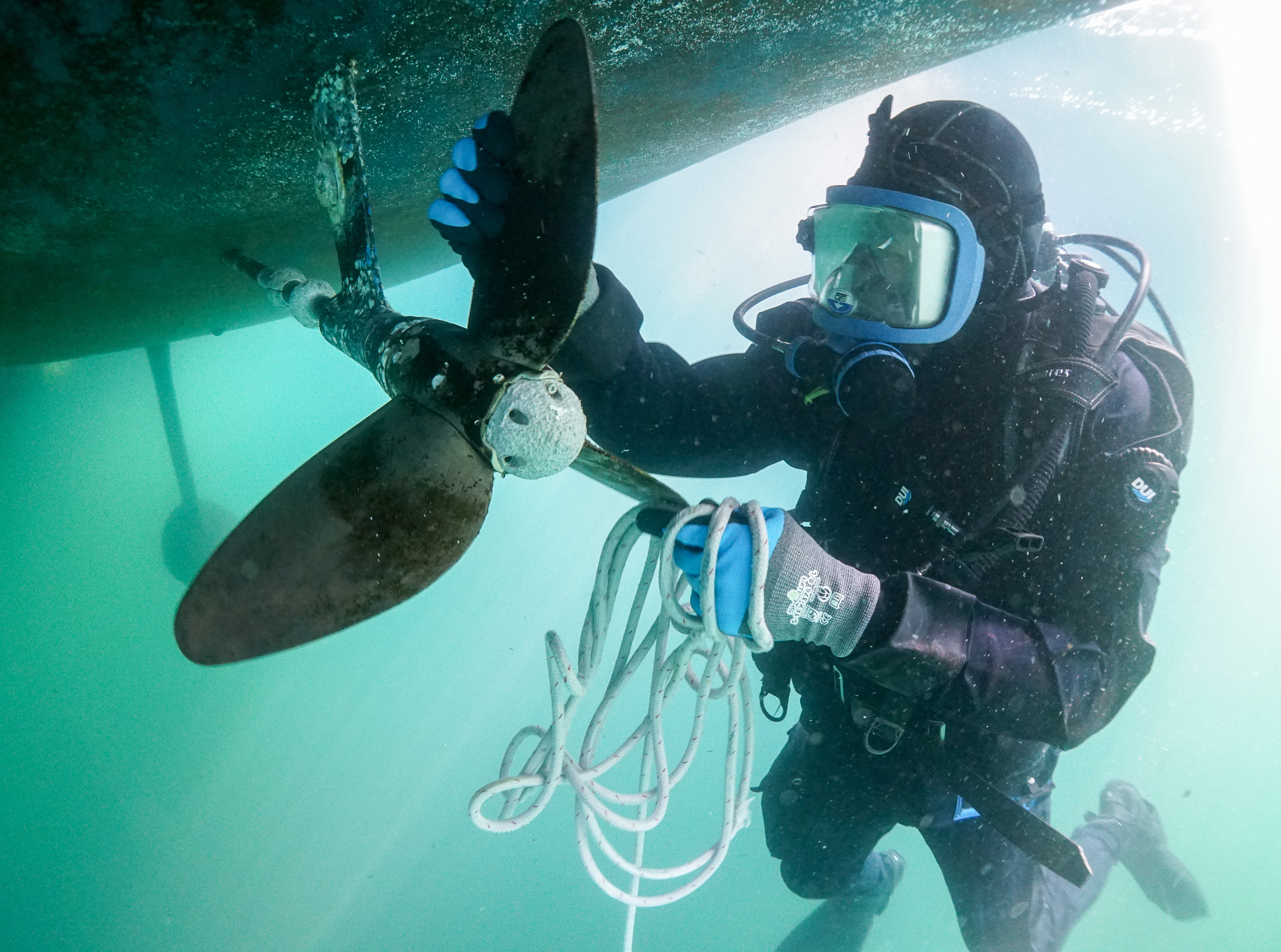
The old adage “out of sight, out of mind” never rang truer than when thinking about the bottoms of our boats. But the fact is, bottom neglect can have serious consequences and it’s important to take a peak down there from time to time. To get to the bottom of this, we went to the expert in this field: Ben Bottoms of Bottoms Boat Diving.
NWY: Why is it so important to have our boat hulls cleaned?
Boat hull cleanings keep our boats performing at their highest capacity. Keeping our boats clean below the waterline helps prevent drag that totally slows the boat down. And when performance goes down, fuel consumption goes up. Hull cleanings also help prolong the bottom paint.
NWY: How many times a year should boaters consider bottom cleanings?
Boat cleaning schedules vary. Generally, boat hulls should be cleaned every 3 months but factors such as the current paint condition, where it’s moored, and the frequency of boat use determines the maintenance schedule. If the paint is over 2 years old and losing some of the anti-fouling properties, for example, the hull will need to be cleaned more often to maintain performance until the next paint job. Boats in saltwater require more frequent cleaning because growth rates are higher and include barnacles. Sailboat racers will want to clean more often than liveaboards, who may only occasionally leave the dock. Trawlers typically cover long distances at lower speeds, and while trawlers are fuel efficient vessels, regular cleaning costs will easily be offset in fuel savings over long trips.
NWY: What is the difference between hard and soft growth?
In the PNW, we generally see hard growth such as barnacles and mussels. These organisms frequently attach to metals, such as the prop and shaft and will significantly impact boat performance. Soft growth is the layers of marine slime and algae that cling to the boat hull and slow the boat down. Anti-fouling paint is designed to slow down hard and soft growth, but going long periods of time without cleaning can negate the paint’s effectiveness.
NWY: Is there a particularly strong impact from bottom cleaning for sailboat racers?
Sailboat racers are looking for every competitive advantage they can get. A skipper can have the best crew and new sails, but a dirty bottom will most definitely slow the boat down. Keeping the hull clean and slick is a major factor in race performance.
NWY: Why do the anodes (zincs) need to be replaced? And how often do you recommend that this procedure happen?
Anodes are sacrificial metals and protect the underwater metals from galvanic corrosion. They are more active in giving up their electrons and will corrode before your prop, shaft, thru hulls, struts, strainers, and sail drives do. For example, two metals (such as a stainless shaft and bronze prop) in electrical contact will create a charge (like a battery) and deteriorate your boat’s valuable underwater metals.
We replace these sacrificial anodes so the valuable metals are not subject to corrosion. Anodes are versatile in both salt and fresh water and there are three types: aluminum, zinc and magnesium. Boaters who spend their summer in saltwater and winter in freshwater, should consider using aluminum anodes.
Zinc is still used in both environments, but is most ideal in saltwater. Magnesium should only be used in fresh water. There are many factors involved when determining anode replacements, but generally, boats moored in saltwater should have their anodes inspected and replaced every 6 months.
NWY: What products are used for the bottom cleaning procedure? Is it all soft/hard cloths or are there ever chemicals involved? If so, what is the impact to the environment?
At Bottoms Boat Diving, white 3M pads are used to clean the hull as they are the least abrasive. If a hull has been neglected for a long period of time or the antifouling boat paint is failing, we use more abrasive red 3M pads. For hard growth, we use a scraper. A good dose of elbow grease is the only chemical used in our underwater cleaning process!
NWY: Are there insurance advantages for boaters who have their boat hull cleaned on a regular basis?
Regular underwater maintenance can help prevent some insurance claims such as galvanic corrosion on the prop. Chris Gibbon, insurance broker with Fournier Insurance, noted in blast month’s Ask the Experts column that insurance providers are getting much stricter and requiring boaters to provide current boat surveys. Some insurance providers will allow in water surveys and video inspections, which is a service we provide for our clients in lieu of a full haulout.
NWY: What are the consequences of not having your boat cleaned?
So much time, money and effort goes into maintaining and enjoying boating. But something as simple as a prop loaded with barnacles can prevent boaters from even leaving the dock! Regular cleanings are an important part of an overall maintenance schedule to improve your pace to your next boating adventure and prevent frustration.
NWY: What are some of the most startling thing you have seen down there?
We regularly encounter harbor seals who like to check in on us while we’re cleaning boat hulls. They love our bubbles and fins and have even try to nibble on our fins from time to time. In addition to finding heavily corroded props, I once inspected a boat for potential grounding and found both props folded over like wilted flowers and one strut totally detached from the hull.
NWY: Any other thoughts to share?
While regular maintenance is key, there are also times when a new prop is absolutely necessary or a tangled line needs to be removed. Bottoms Boat Diving offers a wide variety of underwater services and high-quality video inspections.
